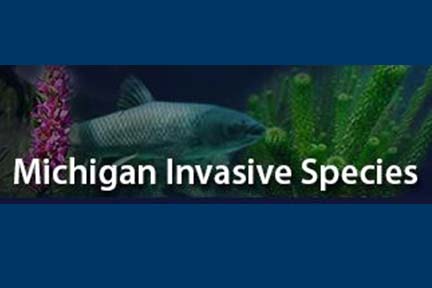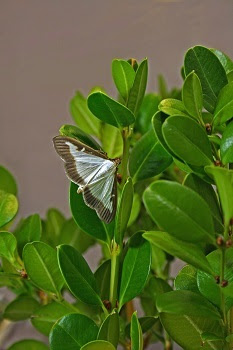News Release
Contact: Joanne Foreman, 517-284-5814
Gardeners, boaters, off-roaders: NotMISpecies webinars just for you!No matter how you enjoy the outdoors, you’re likely to cross paths with invasive species. Gardeners might find them in the well-manicured shrubs along a walkway. Off-road vehicle enthusiasts can encounter thorny brush along the trails, and boaters face increasing numbers of invasive species fouling motors and limiting access to their favorite waterways. Michigan’s NotMISpecies webinars are here with the latest information to help clear the way to outdoor enjoyment by showing how to manage and prevent the spread of invasive species, no matter where adventure takes you. Take advantage of these hourlong sessions and engage with experts on emerging issues across the state. November
JanuaryIn the off-roading world, a muddy 4×4 is a badge of honor, but dirt, mud and trail debris also can carry invasive plant fragments and seeds from one beautiful landscape to another. When the North Country Cooperative Invasive Species Management Area set its sights on educating motorized trail users about the importance of cleaning their vehicles, the question was, “How?” Join Vicki Sawicki, NCCISMA program coordinator, and technician Zach Peklo for “Dirt Never Hurt, but Invasive Species Do – Engaging ORVers to Stop Invasive Spread” (9 a.m. Tuesday, Jan. 23). They will share unique approaches to reaching this transient and fast-moving audience and helping them embrace the beauty of clean rides. February
The series will take a break in December, leaving ample time to catch up on episodes you might have missed. Find recordings of all the past NotMISpecies webinars or register for new ones at Michigan.gov/EGLE/Outreach/ Michigan’s Invasive Species Program, a collaborative effort of the Michigan departments of Natural Resources; Environment, Great Lakes, and Energy; and Agriculture and Rural Development, coordinates and supports invasive species initiatives across the state and provides support through the Michigan Invasive Species Grant Program.
/Note to editors: Accompanying photos are available below for download. Suggested captions follow. Cattails: Volunteers assist in removing invasive cattails and European frog-bit from the Duck Park shoreline in Alpena. Photo courtesy of Chris Engle, Huron Pines./ |
|||
   |



 Box tree moth (Cydalima perspectalis) was first detected in Michigan in fall 2022. This invasive pest, native to East Asia, poses a major threat to the boxwood plant, an ornamental shrub that is a valuable part of the U.S. (and Michigan) nursery and horticultural industry. Join Susie Iott, Michigan Department of Agriculture and Rural Development invasive species program specialist, for
Box tree moth (Cydalima perspectalis) was first detected in Michigan in fall 2022. This invasive pest, native to East Asia, poses a major threat to the boxwood plant, an ornamental shrub that is a valuable part of the U.S. (and Michigan) nursery and horticultural industry. Join Susie Iott, Michigan Department of Agriculture and Rural Development invasive species program specialist, for  European frog-bit was first detected in southeast Michigan in 1996 and has since spread along the coastal areas of lakes Erie, Huron and Michigan and to some inland lakes. Kevin Kapuscinski, associate professor and assistant director of research at Lake Superior State University’s Center for Freshwater Research and Education, has been studying the aquatic invasive plant and its effects on native ecosystems and water quality since 2019. In
European frog-bit was first detected in southeast Michigan in 1996 and has since spread along the coastal areas of lakes Erie, Huron and Michigan and to some inland lakes. Kevin Kapuscinski, associate professor and assistant director of research at Lake Superior State University’s Center for Freshwater Research and Education, has been studying the aquatic invasive plant and its effects on native ecosystems and water quality since 2019. In